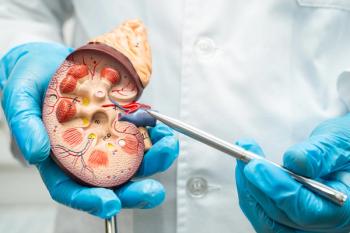
Patients with Rheumatoid Arthritis May Need Additional Support to Reach Treatment Goals
Some patients with rheumatoid arthritis require a refined treat-to-target plan.
Some patients with rheumatoid arthritis (RA) fall short of the treat-to-target (T2T) of remission or low disease activity, usually due to higher disease activity or insufficient treatment, according to study results presented at the 2017 American College of Rheumatology/Association of Rheumatology Health Professionals
Annual Meeting.
“It may be possible for these patients to achieve the goal by refining the treatment strategy or providing palliative treatment for pain,” the authors wrote. “Additional T2T is necessary.”
Using their institution’s electronic medical records, Hideshi Yamazaki, MD, and Tetsuo Takanashi, MD, of Marunouchi Hospital, in Matsumoto, Japan, retrospectively examined 504 patients with RA who were treated with the T2T strategy in 2014 and 2015.
A review of the 2014 data showed that 144 patients were categorized as having moderate or high disease activity according to the simple disease activity index (SDAI). One year later, 84 patients were either in remission or had low disease activity, achieving the T2T goal. In these patients, the SDAI was significantly improved.
The remaining 60 patients did not achieve the T2T goal; they still had more than moderate disease activity 1 year later. Compared with the patients who hit the T2T target, these patients were significantly older with significantly greater disease activity, tender joint count, patient global assessment, and HAQ-DI.
For 21 patients in this study, disease activity did not increase, which suggests that they that they had been insufficiently treated with the T2T strategy.
Newsletter
Stay informed on drug updates, treatment guidelines, and pharmacy practice trends—subscribe to Pharmacy Times for weekly clinical insights.


















































































































































































































